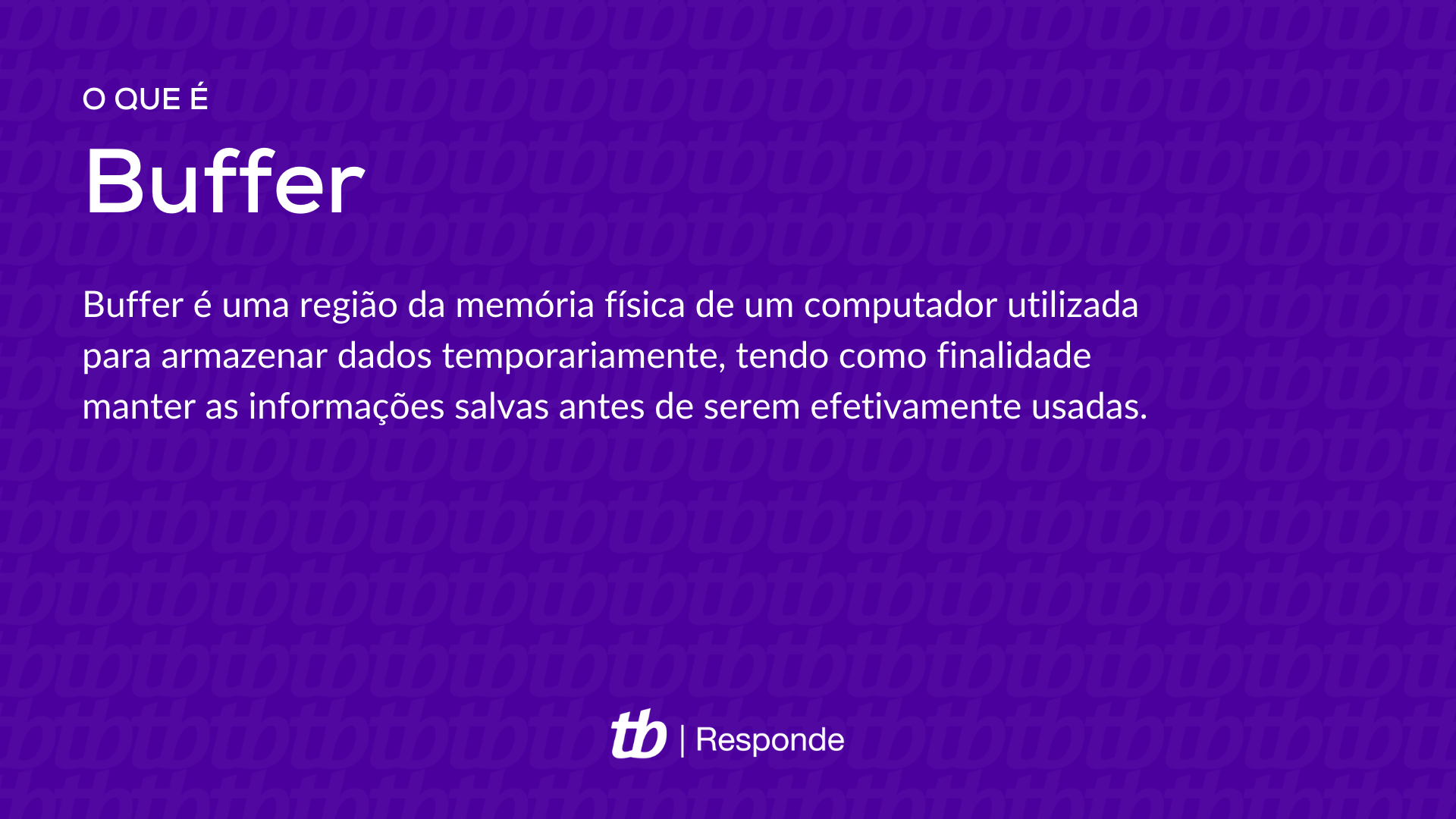O que é um buffer C++?

What is buffer in C C++
Definition of C++ buffer. Buffer is a basic term that denotes a computer memory block that acts as a temporary placeholder. Buffer term is used in almost all fields like video streaming, RAM, etc. In the programming part, a software buffer is a place where data can be kept before it starts processing.
What is buffer in C code
A temporary storage area is called buffer. All input output (I/O) devices contain I/O buffer. When we try to pass more than the required number of values as input then, the remaining values will automatically hold in the input buffer.
What is a buffer in programming
In computer science, a buffer is temporary storage we use when one component feeds data to the other, but their speeds aren't the same. There can be multiple producers and consumers, but we'll focus on the case with a single producer and only one consumer to better explain the concepts.
How do you create a buffer in C++
Usually, when you open a file, a buffer is created. When you close the file, the buffer is flushed. When working in C++, you can create a buffer by allocating memory in this manner: char* buffer = new char[length];
How to clear buffer in C++
Clearing input buffer in C/C++
The function fflush(stdin) is used to flush or clear the output buffer of the stream. When it is used after the scanf(), it flushes the input buffer also. It returns zero if successful, otherwise returns EOF and feof error indicator is set.
How to set buffer in C
C library function – setbuf()
The C library function void setbuf(FILE *stream, char *buffer) defines how a stream should be buffered. This function should be called once the file associated with the stream has already been opened, but before any input or output operation has taken place.
What is a buffer in compiler
Input buffering is a technique used in compilers to read input characters from a source file and store them in a buffer before parsing them. The buffer can be of fixed or variable size, and it helps in reducing the number of input operations needed to parse the input, thereby improving the performance of the compiler.
What is a buffer example
For example, a buffer can be composed of dissolved acetic acid (HC 2H 3O 2, a weak acid) and sodium acetate (NaC 2H 3O 2, a salt derived from that acid). Another example of a buffer is a solution containing ammonia (NH 3, a weak base) and ammonium chloride (NH 4Cl, a salt derived from that base).
What is the fastest way to clear memory C++
The fastest way is to use memset . memset(ptr, 0, length);
How do I delete buffers
Permanently deleting your Buffer accountClick on your profile avatar at the top right of your dashboard and then click Account from the drop down menu.Click Delete My Buffer Account towards the bottom of the page.Enter your password and click Confirm.
How to clear buffer in C ++
Clearing input buffer in C/C++
The function fflush(stdin) is used to flush or clear the output buffer of the stream. When it is used after the scanf(), it flushes the input buffer also. It returns zero if successful, otherwise returns EOF and feof error indicator is set.
How to use Setbuf in C++
In C++ , we can use the setbuf() function to set the internal buffer to be used for I/O operations by a stream . It should be called after associating it with an open file before performing any input or output operations.
What is a buffer and what is its purpose
A buffer is a solution that can resist pH change upon the addition of an acidic or basic components. It is able to neutralize small amounts of added acid or base, thus maintaining the pH of the solution relatively stable. This is important for processes and/or reactions which require specific and stable pH ranges.
What are 5 examples of buffer
Buffer System ExamplesAcetic acid with sodium acetate.Ammonium hydroxide with ammonium chloride.Citric acid with sodium citrate.Carbonic acid with bicarbonate ion.KH2PO4 with K2HPO4.
What makes a buffer
A buffer is made by mixing a large volume of a weak acid or weak base together with its conjugate. A weak acid and its conjugate base can remain in solution without neutralizing each other. The same is true for a weak base and its conjugate acid.
How do you free memory in C++
C++ free()
The free() function in C++ deallocates a block of memory previously allocated using calloc, malloc or realloc functions, making it available for further allocations. The free() function does not change the value of the pointer, that is it still points to the same memory location.
What is the solution for memory leak in C++
Just follow a C++ way of managing memory, and most of the leaks will go away. delete objectPtr; When the variable objectPtr goes out of scope in the first case, its destructor, std::shared_ptr::~shared_ptr, will be called. The destructor frees memory.
How to remove buffer in C
Using “ while ((getchar()) != '\n'); ”: Typing “while ((getchar()) != '\n');” reads the buffer characters till the end and discards them(including newline) and using it after the “scanf()” statement clears the input buffer and allows the input in the desired container.
How do you clear a buffer in C++
In order to clear the input buffer after the user has entered too many characters, you will need to clear the status flags of the input stream and then ignore all cahracters up to the newline. This can be done like so: cin. clear(); cin.
What is the Setbuf command
The setbuf function controls buffering for stream . The stream argument must refer to an open file that hasn't been read or written. If the buffer argument is NULL , the stream is unbuffered. If not, the buffer must point to a character array of length BUFSIZ , where BUFSIZ is the buffer size as defined in STDIO.
Why use Setbuf in C
setbuf() — Control Buffering
If the operating system supports user-defined buffers, setbuf() controls buffering for the specified stream. The setbuf() function only works in ILE C when using the integrated file system. The stream pointer must refer to an open file before any I/O or repositioning has been done.
What is an example of a buffer
For example, a buffer can be composed of dissolved acetic acid (HC 2H 3O 2, a weak acid) and sodium acetate (NaC 2H 3O 2, a salt derived from that acid). Another example of a buffer is a solution containing ammonia (NH 3, a weak base) and ammonium chloride (NH 4Cl, a salt derived from that base).
Why do we need a buffer
The main purpose of a buffer is to maintain the pH level to a certain value by neutralizing small amounts of acid or bases added to that particular solution. If an acid or base is added to a reaction, equilibrium gets disturbed. So, buffers are used to maintain the same pH value.
What are the 3 main buffers
The body's chemical buffer system consists of three individual buffers: the carbonate/carbonic acid buffer, the phosphate buffer and the buffering of plasma proteins.
What are the 4 types of buffer
Types of buffer solutions(a) Acidic Buffer: It is formed by the mixture of weak acid and its salt with a strong base.(b) Basic Buffer: It is formed by the mixture of a weak base and its salt with strong acid.(c) Simple Buffer: It is formed by a mixture of acid salt and normal salt of a polybasic acid,



0 Comments